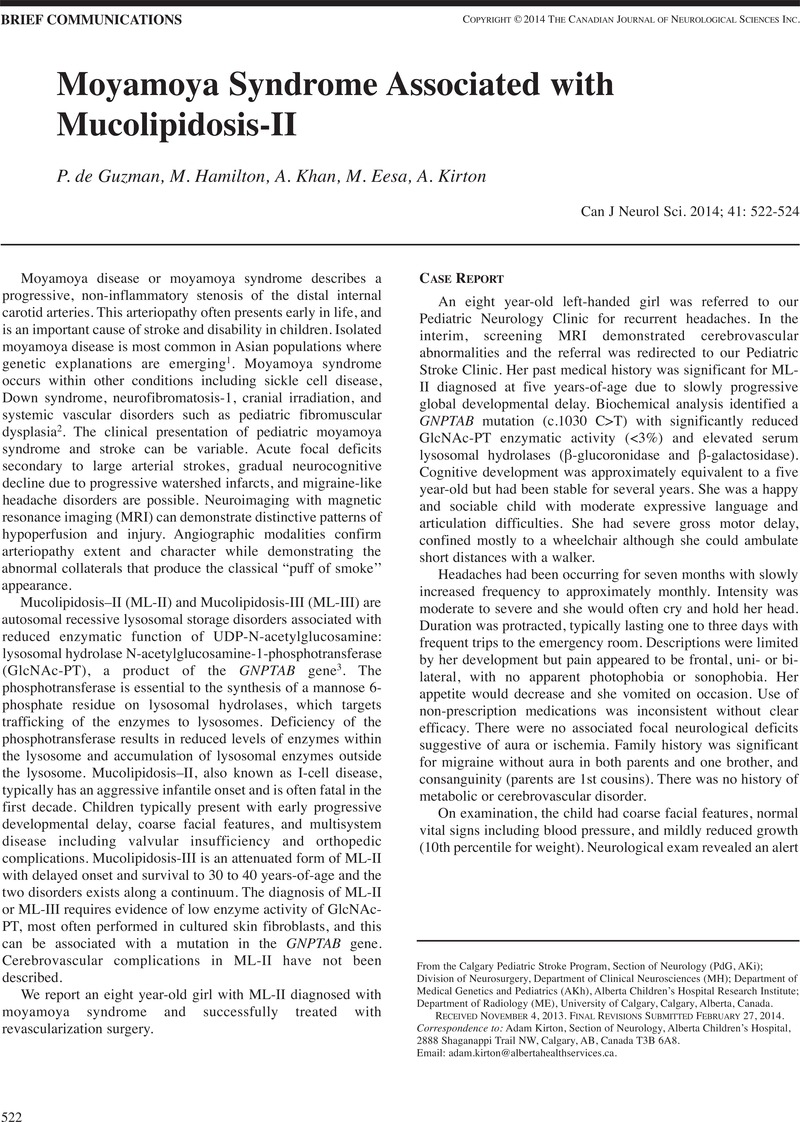Crossref Citations
This article has been cited by the following publications. This list is generated based on data provided by Crossref.
Talbot, Jamie
Singh, Priyanka
Puvirajasinghe, Clinda
Sisodiya, Sanjay M.
and
Rugg-Gunn, Fergus
2020.
Moyamoya and progressive myoclonic epilepsy secondary to CLN6 bi-allelic mutations – A previously unreported association.
Epilepsy & Behavior Reports,
Vol. 14,
Issue. ,
p.
100389.
Miller, Raphael
Unda, Santiago R
Holland, Ryan
and
Altschul, David J
2021.
Western Moyamoya Phenotype: A Scoping Review.
Cureus,





